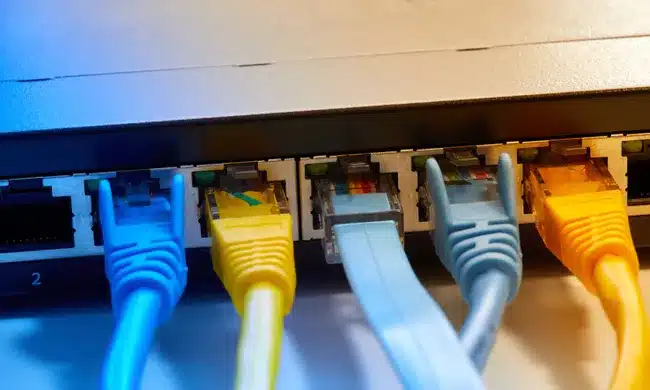In an era where digital connectivity is paramount, achieving higher internet speeds has always been a key focus for researchers and tech enthusiasts. Recently, a groundbreaking internet speed record was set, reaching an astonishing 402 terabits per second (Tbps). This achievement not only represents a significant technological milestone but also opens up new possibilities for the future of broadband and internet services. This article delves into the implications of this new speed record, the technology behind it, and what it means for consumers and industries alike.
The New Internet Speed Record: An Overview
The latest internet speed record of 402Tbps was achieved by a team of researchers using advanced fiber-optic technology. To put this into perspective, 402Tbps is fast enough to download a 4K movie in under a millisecond. This unprecedented speed is a leap forward from the previous records and sets a new benchmark for data transmission capabilities.
The Technology Behind 402Tbps
Achieving such an incredible speed requires cutting-edge technology and innovative approaches. Here are some key technological components that made this possible:
Advanced Fiber-Optic Cables
The backbone of this speed record is the use of advanced fiber-optic cables. These cables are designed to carry light signals over long distances with minimal loss. The researchers utilized a specialized type of fiber known as multi-core fiber (MCF), which contains multiple cores within a single fiber, significantly increasing the amount of data that can be transmitted simultaneously.
Wavelength-Division Multiplexing (WDM)
Wavelength-Division Multiplexing (WDM) is a technology that allows multiple data signals to be sent over the same optical fiber by using different wavelengths (or colors) of light. By combining WDM with MCF, the researchers were able to exponentially increase the data throughput, achieving the 402Tbps speed.
Advanced Signal Processing
Another critical factor in achieving this speed is advanced signal processing techniques. These techniques involve complex algorithms that optimize the transmission and reception of data, reducing errors and enhancing the overall efficiency of data transfer.
Implications for Broadband and Internet Services
The new speed record has far-reaching implications for broadband and internet services. Here are some potential impacts:
Revolutionizing Data Centers
Data centers are the heart of the internet, handling massive amounts of data every second. The ability to transmit data at 402Tbps could revolutionize data center operations, enabling faster data processing, reduced latency, and more efficient storage solutions. This can lead to improved performance for cloud services, streaming platforms, and online applications.
Enhancing Consumer Internet Experience
For consumers, the prospect of ultra-high-speed internet is incredibly exciting. With speeds of 402Tbps, buffering and lag could become relics of the past. Streaming 8K videos, participating in high-definition virtual reality experiences, and downloading large files instantly would become the norm. This could also pave the way for new applications and services that require high bandwidth, such as remote surgeries and immersive telepresence.
Advancing Scientific Research
High-speed internet is crucial for scientific research, where large datasets need to be transferred and analyzed quickly. Fields such as genomics, climate modeling, and astrophysics could benefit immensely from faster data transmission, enabling researchers to collaborate more effectively and make breakthroughs at a faster pace.
Challenges and Considerations
While the new speed record is a monumental achievement, several challenges and considerations need to be addressed before such speeds become widely available.
Infrastructure Upgrade
One of the primary challenges is upgrading the existing infrastructure to support such high speeds. Current internet infrastructure, including cables, routers, and switches, would need significant enhancements to handle 402Tbps speeds. This requires substantial investment and coordination between governments, telecom companies, and technology providers.
Cost Implications
The cost of deploying advanced fiber-optic technology and upgrading infrastructure could be prohibitive. Ensuring that these high-speed services are affordable and accessible to a broad population will be crucial to prevent a digital divide.
Security Concerns
Higher data speeds also bring increased security risks. Ensuring the security and integrity of data transmitted at such high speeds will require robust cybersecurity measures. Protecting against potential cyber threats and data breaches will be paramount as internet speeds continue to increase.
The Future of High-Speed Internet
The record-breaking speed of 402Tbps is just the beginning. As technology continues to evolve, we can expect even faster internet speeds in the future. Here are some trends and developments to watch out for:
Quantum Communication
Quantum communication is an emerging field that promises ultra-secure and ultra-fast data transmission. By leveraging the principles of quantum mechanics, researchers aim to create communication networks that are not only faster but also inherently secure.
6G Networks
While 5G networks are still being rolled out globally, researchers are already looking ahead to 6G. This next-generation network technology aims to provide even higher speeds, lower latency, and more reliable connections. The combination of 6G and advanced fiber-optic technology could push internet speeds to new heights.
Space-Based Internet
Companies like SpaceX and Amazon are working on deploying satellite-based internet services. These initiatives aim to provide high-speed internet access to remote and underserved areas. Integrating these services with advanced fiber-optic networks could ensure high-speed connectivity on a global scale.
Conclusion
The achievement of a 402Tbps internet speed record marks a significant milestone in the evolution of digital connectivity. This breakthrough has the potential to transform various industries, enhance consumer experiences, and drive scientific advancements. However, realizing the full potential of such high speeds will require overcoming several challenges, including infrastructure upgrades, cost considerations, and security concerns. As we look to the future, the possibilities for high-speed internet are limitless, promising a more connected and technologically advanced world.
















